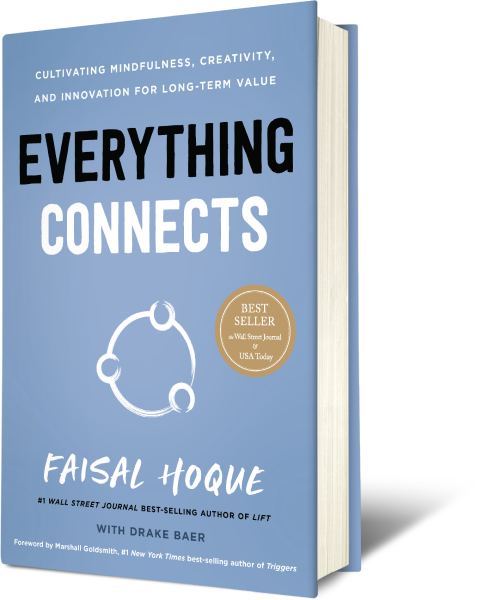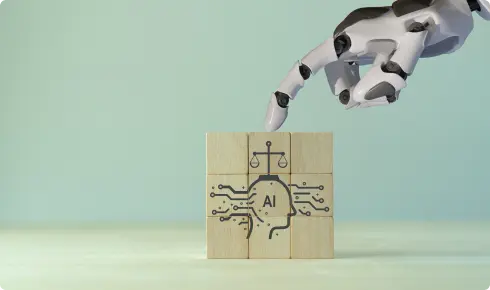A common sense of intent is a powerful unifier.
An old sports cliché holds that no one member of any team is indispensable.
However worn out, that saying still holds a great deal of truth. No matter how skilled or valuable any one player might be, it is the team that matters—how it plays together, interacts and supports its members.
That very same truth applies to business and organizations. As I pointed out in my book “Everything Connects,” each of us is rather staggeringly ignorant, no matter the education and experiences we’ve had. The quickest way to work around our own unique sets of ignorance is to have the trust and counsel of people who know things we don’t.
Looked at in a broader context, as people trying to do meaningful, truthful work—work that impacts others while fostering long term, sustainable value–we need as many hands on deck as possible pulling the rope, so to speak.
So how do we achieve that worthy goal? By combining ideas, perspectives, and skills–by cooperating. We have to partner together. We need a team.
A partnership is a bond. A mutual investment. A relationship. A voluntary, collaborative effort. Partnerships are crucial because, as leadership scholar Don Peppers writes, trust is a lubricant for transactions. We no longer work in an era where we’re trying to make everything as efficient as possible; rather, we’re trying to be more agile, more innovative, to move quicker with our iterations. This means that we need to work together—as a team, as opposed to individuals who happen to occupy the same space.
Although there are any number of factors that can support an effective, team oriented work setting, one dynamic stands out in particular—intent. Since we must continually create value that moves with our customers’ shifting behavior, since we must be able to be with the people we work with people every day–more than our spouses, friends, and families in many cases–we must hold ourselves accountable to our intention every day. The intention, the aspiration, for our work environments, if they are going to create maximum value, is to have one of a mutual sense of flourishing.
One way to construct a common intent that focuses on benefitting as many people as possible is to foster a safe work environment. That has nothing to do with one definition of safety—protection from physical harm—but rather one more emotional in nature. To promote an environment characterized by innovation and creativity, you must first have a safe setting, one which is more comfortable with experimentation and mistakes than others where failure is nothing more than that—failure. A safe environment treats so-labeled failure as an expected, often valuable opportunity to grow, learn and innovate.
Additionally, a supportive and collaborative work environment redefines its approach to the concept of time. Rather than valuing hours put in on the job, far more constructive to interpret time spent with results achieved—in other words, was what time that was spent used in the most advantageous, creative manner? Further, do team members feel comfortable in truly prioritizing their time to achieve those best possible results—to be willing to work in partnership while feeling safe enough to say, no, that’s not the optimal use of what time I have? Working closely and successfully also mandates respect for one another’s time.
These varied topics merge on a central truth—a successful organization is one based on strong partnerships, one that recognizes the varied strengths of its members and the necessity of supportive, but no less candid, relationships. Keys to building those sorts of partnerships include:
- You must be honest with yourself, your audience, and your mission. Effective
leaders must be honest in order to create trust and respect from their team and anyone they encounter. - Being forthright. Direct communication is aptly named. It leads to direction that’s understood and more readily embraced.
- Thinking ahead. Another topic I discuss in “Everything Connects” is the interplay between a here and now that’s dynamic and a complementary focus on the long term. However great you may be doing now, don’t stop anticipating what might be next. Further, surround yourself with forward thinking teammates. A single team member who’s complacent can drag everyone involved into a downward spiral or, at the very least, hinder progress and innovation.
- An ability to influence and inspire. The most successful leaders are able to inspire and influence everyone from their executive team to employees, customers, clients, partners, investors, and beyond. Inspiration cannot happen without clear communication. Moreover, it mandates honesty. Openly acknowledge your flaws and challenges as well as your strengths. Effective, inspiring leaders are human beings and are not skittish about behaving like one, warts and all.
- Building community. A healthy business ecosystem must be nurtured to achieve continual success. A sustainable ecosystem is the structure you form around your business. Those interconnections allow you to meet and work with individuals and groups, exposing you and your team to ideas and perspectives they wouldn’t have encountered otherwise, creating synergistic cross creativity. The interoperability enables collaboration, whether with your neighbor, your C-suite counterparts, or potential customers across the world.
- A mission mindset. If you want to get the best out of your team, they need to feel invested in their mission and invested in you. You can only do this by showing that you are investing in them, not as “resources” or “talent,” but people with complete lives. You cannot command a flower to grow, but you can provide the environment for it to bloom. People are no different.
Excerpted from Everything Connects (Fast Company Press, 2022).
Copyright (c) 2022 by Faisal Hoque. All rights reserved.















